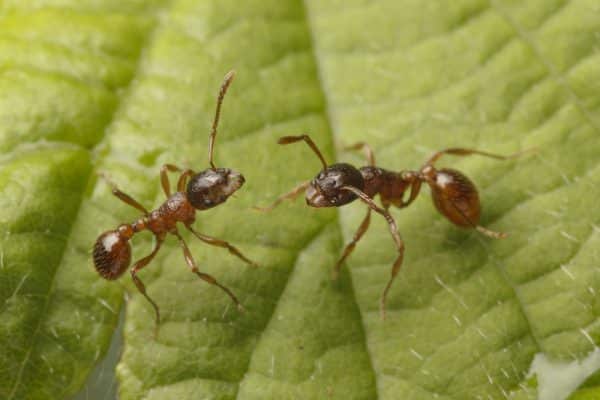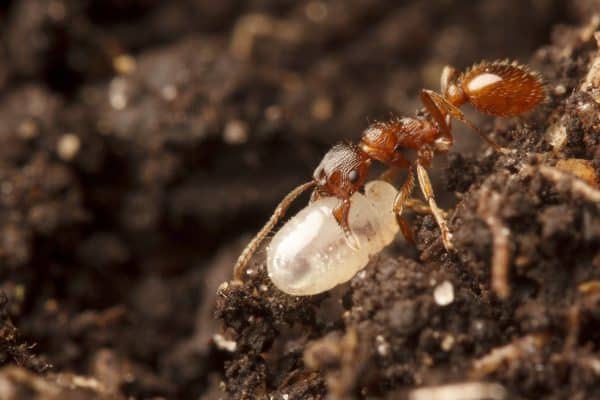European fire ant
Warning
This is a stinging insect. When their nest is disturbed, ants may emerge, swarm and deliver irritating stings. If you encounter a European fire ant nest DO NOT attempt to remove it yourself. In rare cases, European fire ant bites have led to allergic reactions.
About This Species
European fire ants are native to Europe and Asia. They have been introduced to various parts of Eastern North America and arrived in BC in 2010. European fire ants (Common red ant) queens will fly to new areas in their native range in order to spread. Curiously, the populations in BC never produce flying queens, so they can only spread by walking, or by being inadvertently transported by human activity. These ants nest in soil, and so the movement of soil and leaf litter is the most likely method by which these ants are spreading within our province. When one nest establishes, it will produce new queens that settle nearby, leading to large areas which are completely dominated by fire ant nests. These ants are very aggressive and territorial, and quickly displace native species wherever they establish.
European fire ants do not produce above ground ant hills. This makes their nests difficult to see. They can rapidly establish in open grassy areas such as lawns, parks, and golf courses, and make these areas unusable. European fire ants are very difficult to control. Nests can have multiple queens, making chemical pesticides less effective. European fire ants are designated as a Regional Containment/Control species by the BC Provincial Priority Invasive Species List.
How to Identify
Individual ants are small, measuring 2-3 mm in length. They are typically a red-brown colour, with two small backwards-facing spines at the back end of their thorax.
Take Action
If you have European fire ants on your property, do not move any soil, turf, or leaf litter off your property. If you believe you have found European fire ants, contact ISCBC at info@bcinvasives.ca or 1- 888-933-3722.
-
If you need advice about invasive species on your property or you are concerned about reported invasives in your local area, contact your local government or regional invasive species organization.
REPORT TO PROTECT BC’S BIODIVERSITY

Use the app
Observe and report to protect BC’s biodiversity

Report through this website
Use our form to tell us what you’re seeing and where.

















